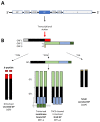Host and Viral Proteins Modulating Ebola and Marburg Virus Egress
- PMID: 30609802
- PMCID: PMC6357148
- DOI: 10.3390/v11010025
Host and Viral Proteins Modulating Ebola and Marburg Virus Egress
Abstract
The filoviruses Ebolavirus and Marburgvirus are among the deadliest viral pathogens known to infect humans, causing emerging diseases with fatality rates of up to 90% during some outbreaks. The replication cycles of these viruses are comprised of numerous complex molecular processes and interactions with their human host, with one key feature being the means by which nascent virions exit host cells to spread to new cells and ultimately to a new host. This review focuses on our current knowledge of filovirus egress and the viral and host factors and processes that are involved. Within the virus, these factors consist of the major matrix protein, viral protein 40 (VP40), which is necessary and sufficient for viral particle release, and nucleocapsid and glycoprotein that interact with VP40 to promote egress. In the host cell, some proteins are hijacked by filoviruses in order to enhance virion budding capacity that include members of the family of E3 ubiquitin ligase and the endosomal sorting complexes required for transport (ESCRT) pathway, while others such as tetherin inhibit viral egress. An understanding of these molecular interactions that modulate viral particle egress provides an important opportunity to identify new targets for the development of antivirals to prevent and treat filovirus infections.
Keywords: ESCRT; Ebola virus; Marburg virus; VP40; budding; egress; filovirus; ubiquitination; viral inhibition.
Conflict of interest statement
The authors declare no conflict of interest.
Figures



Similar articles
-
Ubiquitin Ligase SMURF2 Interacts with Filovirus VP40 and Promotes Egress of VP40 VLPs.Viruses. 2021 Feb 12;13(2):288. doi: 10.3390/v13020288. Viruses. 2021. PMID: 33673144 Free PMC article.
-
Ubiquitin Ligase WWP1 Interacts with Ebola Virus VP40 To Regulate Egress.J Virol. 2017 Sep 27;91(20):e00812-17. doi: 10.1128/JVI.00812-17. Print 2017 Oct 15. J Virol. 2017. PMID: 28768865 Free PMC article.
-
Suppressor of Cytokine Signaling 3 Is an Inducible Host Factor That Regulates Virus Egress during Ebola Virus Infection.J Virol. 2015 Oct;89(20):10399-406. doi: 10.1128/JVI.01736-15. Epub 2015 Aug 5. J Virol. 2015. PMID: 26246577 Free PMC article.
-
Innate immune evasion by filoviruses.Virology. 2015 May;479-480:122-30. doi: 10.1016/j.virol.2015.03.030. Epub 2015 Apr 3. Virology. 2015. PMID: 25843618 Free PMC article. Review.
-
Virus and host interactions critical for filoviral RNA synthesis as therapeutic targets.Antiviral Res. 2019 Feb;162:90-100. doi: 10.1016/j.antiviral.2018.12.006. Epub 2018 Dec 11. Antiviral Res. 2019. PMID: 30550800 Free PMC article. Review.
Cited by
-
Computational solutions of the HIV-1 infection of CD4 T-cells fractional mathematical model that causes acquired immunodeficiency syndrome (AIDS) with the effect of antiviral drug therapy.Chaos Solitons Fractals. 2020 Oct;139:110092. doi: 10.1016/j.chaos.2020.110092. Epub 2020 Jul 22. Chaos Solitons Fractals. 2020. PMID: 32834626 Free PMC article.
-
The Role of Exosome and the ESCRT Pathway on Enveloped Virus Infection.Int J Mol Sci. 2021 Aug 22;22(16):9060. doi: 10.3390/ijms22169060. Int J Mol Sci. 2021. PMID: 34445766 Free PMC article. Review.
-
Design of a novel multi-epitope vaccine against Marburg virus using immunoinformatics studies.BMC Biotechnol. 2024 Jul 5;24(1):45. doi: 10.1186/s12896-024-00873-2. BMC Biotechnol. 2024. PMID: 38970027 Free PMC article.
-
ESCRT Machinery in HBV Life Cycle: Dual Roles in Autophagy and Membrane Dynamics for Viral Pathogenesis.Cells. 2025 Apr 16;14(8):603. doi: 10.3390/cells14080603. Cells. 2025. PMID: 40277928 Free PMC article. Review.
-
Nuclear Egress.Curr Issues Mol Biol. 2021;41:125-170. doi: 10.21775/cimb.041.125. Epub 2020 Aug 7. Curr Issues Mol Biol. 2021. PMID: 32764158 Free PMC article. Review.
References
-
- Towner J.S., Amman B.R., Sealy T.K., Reeder Carroll S.A., Comer J.A., Kemp A., Swanepoel R., Paddock C.D., Balinandi S., Khristova M.L., et al. Isolation of genetically diverse Marburg viruses from Egyptian fruit bats. PLoS Pathog. 2009;5:e1000536. doi: 10.1371/journal.ppat.1000536. - DOI - PMC - PubMed
-
- Goldstein T., Anthony S.J., Gbakima A., Bird B.H., Bangura J., Tremeau-Bravard A., Belaganahalli M.N., Wells H.L., Dhanota J.K., Liang E., et al. The discovery of Bombali virus adds further support for bats as hosts of ebolaviruses. Nat. Microbiol. 2018;3:1084–1089. doi: 10.1038/s41564-018-0227-2. - DOI - PMC - PubMed
-
- Towner J.S., Khristova M.L., Sealy T.K., Vincent M.J., Erickson B.R., Bawiec D.A., Hartman A.L., Comer J.A., Zaki S.R., Stroher U., et al. Marburgvirus genomics and association with a large hemorrhagic fever outbreak in Angola. J. Virol. 2006;80:6497–6516. doi: 10.1128/JVI.00069-06. - DOI - PMC - PubMed
Publication types
MeSH terms
Substances
LinkOut - more resources
Full Text Sources
Medical

